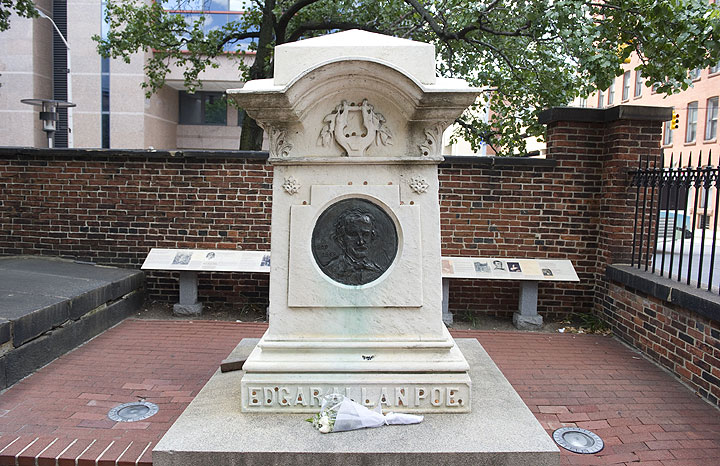NEW YORK – Baltimore on a budget? Easy as Edgar Allan Poe. His gravesite is one of a number of memorable places that can be visited around this historic city without spending a dime. Here are some details on paying your respects to the famed poet who penned “The Raven,” along with some other fun things to do – including not one but two major museums that offer free admission.

EDGAR ALLAN POE
Poe died in 1849 after being found delirious on the streets of Baltimore. He’s buried in Westminster Hall and Burying Ground, at 519 W. Fayette St. You’ll find his likeness on one monument and a raven on another. Fervent fans may want to pony up the $5 to visit the tiny house where he lived, now a museum open weekends at 203 N. Amity St.
BALTIMORE MUSEUM OF ART
The Baltimore Museum of Art has something for everyone. The contemporary art wing showcases emerging artists – several based in Baltimore – as well as heavyweights like Andy Warhol. Ancient tile mosaics from Antioch – now modern-day Turkey – offer stunning geometric designs that date to the second century. And the museum’s Cone Collection includes a vast number of paintings by Matisse and other Impressionist and post-Impressionist artists collected by two sisters from Baltimore, Claribel and Etta Cone, who collected some of the greatest artists of their era. You can even visit a room decorated to evoke the sisters’ apartments, abundant in fine furnishings, paintings and other art objects.
Another must-see: a tiny Renoir, “On the Shore of the Seine,” that went missing for decades and became the subject of a legal dispute after a woman claimed she bought it for $7 at a flea market.

Get daily National news
The museum also marks its centennial this year with the opening of a newly renovated American Wing on Nov. 23.
WALTERS ART MUSEUM
William Walters made a fortune in rye whiskey, railroads and banking in the 19th century, and along the way developed a passion for collecting art and antiquities. His son Henry was an avid collector, too, and built a memorial to his father in 1909 to display their treasures. The building, modeled on an Italian palazzo, opened as a museum in 1934. An installation running Oct. 26-April 17, “From Rye to Raphael: The Walters Story,” tells the father-son tale using photos, artifacts and the collection, from Faberge eggs to paintings by Raphael to a volume of Shakespeare published in 1623. Elsewhere in the museum, be sure to stop by and say “hi” to “Mery,” an ancient Egyptian mummy.
HARBOUR
There are oh-so-many ways to empty your wallet visiting the souvenir shops, pubs and attractions of Baltimore’s massive harbour, which has undergone a revival in recent years. But there’s something to be said for just strolling around the waterfront, soaking up the views and layers of history. The historic Fells Point district offers cobblestone streets and some of the city’s oldest buildings, including the Robert Long House, built in 1765, at 812 S. Ann St. A plaque on a now-shuttered recreational pier at 1701 Thames St. marks the place where the TV show “Homicide” was shot in the 1990s. On the other side of the harbour stands Fort McHenry, where “The Star-Spangled Banner” was penned during the War of 1812. It costs $7 to enter the fort, but you can visit the grounds for free.
BROMO SELTZER
One of the city’s most distinctive buildings is a narrow stone tower with a castlelike turret and large clock face. This 15-story historic landmark was the city’s tallest building when it was erected in 1911. It was modeled after the Palazzo Vecchio in Florence, Italy, and was commissioned by the inventor of Bromo Seltzer, a headache remedy. Instead of numbers, the clock face spells out B-R-O-M-O-S-E-L-T-Z-E-R. It’s located at 21 S. Eutaw St., at the corner of Lombard, but can be seen from blocks away. Today it houses studio space for artists.







Comments